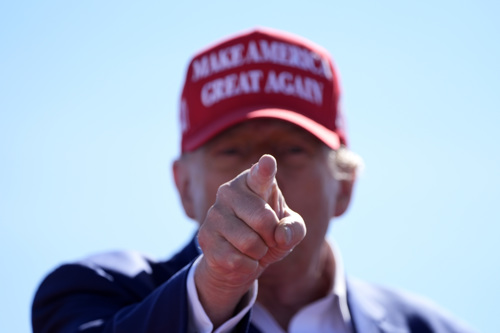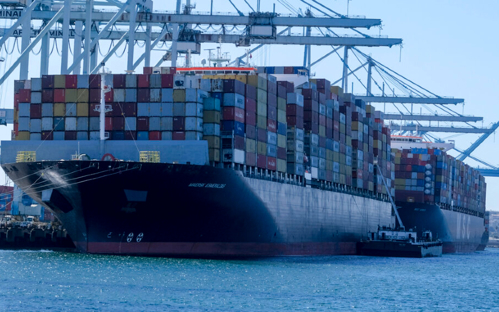After other countries buckled over tariff threats from President Donald Trump, China immediately countered Trump’s plans. It informed the World Trade Organization this week of a 15% tariff on U.S. coal and natural gas, and a 10% tariff on U.S. crude oil, agriculture machinery, and large-engine cars.
The notification to the WTO sets up a 60-day negotiation period between the U.S. and China, according to an Associated Press story.
Asked for his analysis of the tariff fight, Asia policy analyst Gordon Chang says China doesn’t have much “ammo” to threaten the U.S. over imports and exports. That’s because China already imports a small amount of U.S. goods compared to U.S. exports to China, he says, and that lessens China’s bargaining power.
 “Remember that China is a trade-surplus country. We're the trade-deficit one,” Chang points out.
“Remember that China is a trade-surplus country. We're the trade-deficit one,” Chang points out.
The United States ended 2024 with a $918 billion trade deficit, the second-highest on record, led by China ($294 billion), Mexico ($15.4 billion), and Canada ($7.9) billion, according to a Reuters story about Trump and the China-U.S. tariff standoff.
That lop-sided trade deficit is a stark reminder how few U.S. products are being shipped out of the country versus what is arriving on our shores. The trade deficit is a big reason why Trump is using tariff threats as a bargaining tool in his “America First” policy, but his decision to do that is being called everything from risky to foolish according to some economists and political analysts.
It is also not a new tactic. Trump imposed tariffs on China during his first term, too, which hurt soybean farmers in the Midwest and commercial fishermen in Alaska after China predictably retaliated with its own tariffs. China's own tariffs impacted pork, soybeans, dairy products, and nuts, resulting in that trade war hurting farmers the most.
 U.S. farmers have not forgotten that pain, either, which is why American Farm Bureau said this week it supports “fair trade” with China, Mexico, and Canada, “but, unfortunately, we know from experience that farmers and rural communities will bear the brunt of retaliation.”
U.S. farmers have not forgotten that pain, either, which is why American Farm Bureau said this week it supports “fair trade” with China, Mexico, and Canada, “but, unfortunately, we know from experience that farmers and rural communities will bear the brunt of retaliation.”
Back in November, after Trump's sweeping election win in the Midwest, farmers told Reuters they were hoping Trump would negotiate with China to increase soybean exports after the 2018 trade war.
A Fox Business story, which quoted Farm Bureau's concerns, said similar warnings are being voiced by the National Association of Home Builders; Consumer Brands Association; National Association of Manufacturers; U.S. Chamber of Commerce; and National Retail Federation

Chang, who studies China’s economy, says the U.S. economy is about 50% bigger than China which helps the U.S. in another trade war.
“And all this means,” Change observes, “is that the only way that Xi Jinping can prevail in a trade war with the United States is if he can intimidate President Trump to get him to back down.”
President Trump is not easy to intimidate, Chang points out, so it is likely the U.S. will win this new trade war with President Xi and the Chinse Communist Party.







